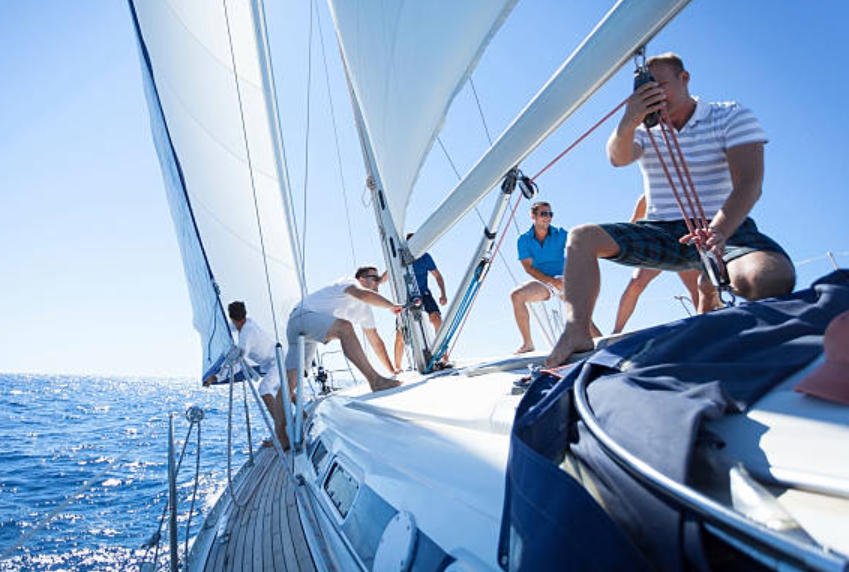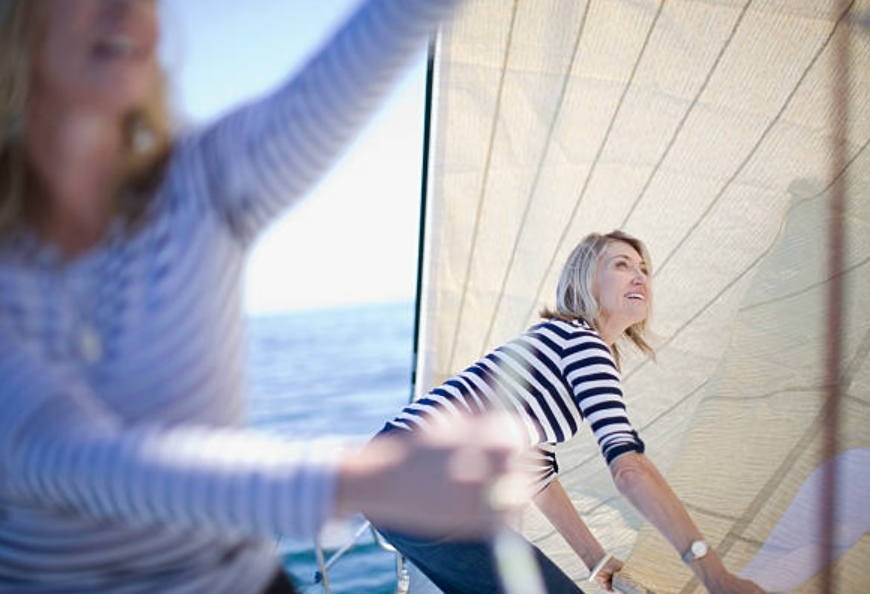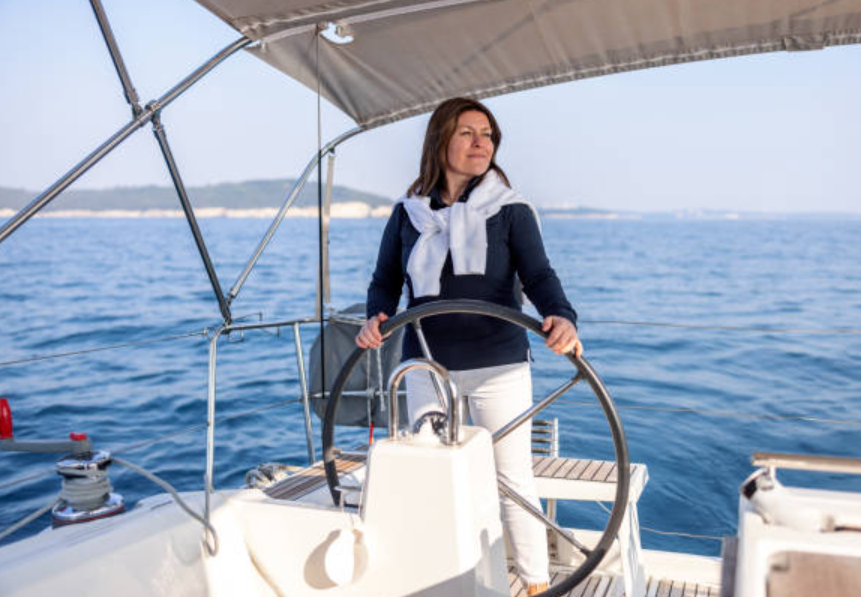In this guide, we’ll guide you through the basics of selecting the perfect sailboat for your beginner skill level. From determining the right size and type to considering important features, we’ll empower you to find the boat that will ignite your passion for sailing.
Contents
Sailing for First Timers: Picking the Perfect Vessel

Embarking on the journey of sailing can be as thrilling as it is serene, and choosing the right sailboat is your first step into this captivating world. If you’re a beginner, the vast sea of options might seem overwhelming, but fear not! You’re about to discover how to navigate these waters with ease.
When you’re new to sailing, simplicity is your best friend. You want a sailboat that forgives mistakes, is easy to handle, and most importantly, fun to sail.
For instance, a compact sailboat will be more manageable and less intimidating. Boats like the Optimist or the Sunfish are excellent choices for dipping your toes into the sailing world.
Also, the fewer sails and lines, the better. A Lateen Rig, with its single sail, offers a straightforward sailing experience, perfect for getting the hang of the basics.
You may want to look for a boat that’s stable and forgiving. A wider hull design provides more stability, which means less worry about capsizing as you learn.
Begin on looking at affordable options that don’t compromise on quality or the sailing experience as you learn to sail early on.
Types of Sailboats for Beginners
Choosing the right type of sailboat is crucial for a beginner. It’s about finding the balance between stability, ease of handling, and the joy of sailing. Let’s explore some popular options:
Small, Stable Boats
Sunfish: A simple, single-person dinghy that’s ideal for learning the basics. Its minimalistic design and lightweight make it a breeze to handle.
Laser: Known for its agility and speed, the Laser is a lightweight dinghy that offers a step up from the basics, allowing you to hone your sailing skills and even enter the racing scene.
Hobie Cat: If you’re looking to share the experience, the Hobie Cat is a stable catamaran that’s perfect for sailing with friends and enjoying the water.
Keelboats
J/22: A stable and easy-to-handle keelboat that’s great for day sailing and learning. It’s responsive and safe, making it a favorite among sailing schools.
Catalina 22: This keelboat is comfortable and forgiving, with cabin space that allows for overnight trips, making it a versatile choice for longer adventures.
Hunter 19: An affordable and manageable keelboat suitable for lakes and coastal waters. It’s a practical option for those on a budget who still want a quality sailing experience.
Additional Considerations
Size: Smaller boats are generally easier to handle and maintain.
Budget: Consider the initial cost, as well as ongoing maintenance and docking fees.
Sailing Goals: Whether you’re sailing solo or with a crew, racing, or cruising, your goals will dictate the best boat for you.
Solo vs. With Crew: Solo sailing requires a boat that’s easy to manage single-handedly, while sailing with a crew opens up options for larger, more complex boats.
Remember, the best sailboat for you is one that fits your personal sailing style and goals. Take the time to explore different types, and you’ll find the perfect match to start your sailing adventure.
Learning the Basics of Sailing

Embarking on your sailing journey begins with understanding the language of the sea. Here’s a breakdown of essential sailing terms and concepts to set you on course:
Sailing Terminology
Hull: The body of the sailboat that sits in the water.
Rudder: A flat piece, usually at the stern, that steers the sailboat.
Sail: The fabric that catches the wind and propels the boat forward.
Windward: The side of the boat from which the wind is blowing.
Leeward: The side of the boat sheltered from the wind.
Parts of a Sailboat
Mast: The tall vertical pole that supports the sails.
Boom: The horizontal beam attached to the mast, holding the bottom of the sail.
Keel: The structure running along the bottom of the hull, providing stability.
Basic Sailing Principles
Wind Power: The engine of your sailboat, harnessed by the sails to move.
Points of Sail: The sailboat’s direction relative to the wind, dictating sail position.
Tacking: Turning the bow through the wind to change direction.
Jibing: Turning the stern through the wind, a maneuver for changing direction.
Resources for Sailing Beginners
To truly master sailing, immerse yourself in the community. Seek out local sailing schools and clubs where you can find courses tailored for beginners. Safety training is paramount, so prioritize resources that emphasize safe sailing practices. Remember, the sea is both a teacher and a playground, and with the right foundation, you’ll be ready to set sail with confidence.
Choose Your First Sailing Adventure
Setting sail for the first time is an exhilarating experience that marks the beginning of a lifelong passion for many. Here’s how you can embark on your first sailing adventure with confidence:
Finding Your First Sailing Experience
Start by looking for local sailing schools and clubs. These institutions offer courses designed to take you from a novice to a competent sailor, equipped with the necessary skills to continue on as crew or even to take the helm of your own vessel.
Chartering a Boat with a Captain
Chartering a boat with a captain can be a fantastic way to gain experience without the pressure of handling the boat yourself. The pros include having an expert guide you and handle all the technical aspects of sailing, allowing you to enjoy the journey and learn at your own pace. However, it can be more costly, and you’ll have less hands-on experience compared to sailing the boat yourself.
Beginner-Friendly Races or Rallies
Participating in beginner-friendly races or rallies is a great way to get involved in the sailing community. These events are often supportive and fun, providing a platform to practice your skills and meet fellow sailing enthusiasts.
Matching Your Needs to the Right Type of Boat
It’s essential to match your sailing needs to the right type of boat. Consider the size, type of hull, and the kind of sailing you wish to do—whether it’s casual day sailing, racing, or longer voyages. Each boat type offers different features and levels of comfort, so choose one that aligns with your aspirations and skill level.
Remember, every sailor’s journey begins with that first step off the dock. So, find a course, join a club, or charter a boat, and let the wind guide you to your very own sailing adventure.
Get Out There and Sail!

Joining the sailing community offers a sea of benefits. It’s not just about learning to tie knots and steer; it’s about becoming part of a tradition that dates back millennia. When you join, you’re not just a sailor; you’re an explorer, a guardian of an age-old craft. The camaraderie among sailors is legendary, and for good reason. There’s a shared understanding that comes from facing the wind and waves together.
Online Sailing Groups: Your Virtual Crewmates
In today’s connected world, online sailing groups are invaluable. They’re a treasure trove of knowledge, experience, and support. For beginners, these groups can be a lifeline, offering advice, encouragement, and sometimes even virtual companionship on your first solo voyages.
Setting Sailing Goals: Chart Your Course
Setting goals is like plotting a course: it gives you direction and purpose. Whether it’s mastering a new knot, soloing for the first time, or participating in a regatta, each goal you set and meet is a milestone on your journey to becoming a seasoned sailor.
Essential Gear: Your Sailing Toolkit
Before you set sail, make sure you’re equipped with the essentials. A life jacket is non-negotiable—it’s your first line of defense. Sunscreen and sunglasses are your shields against the elements. And remember, the right gear doesn’t just keep you safe; it makes the adventure all the more enjoyable.
Conclusion
Sailing is freedom—the spray of the sea, the billow of the sails, and the boundless horizon. It’s exercise for the body and the soul, a way to connect with nature and with a community of like-minded adventurers. If you’ve ever dreamed of feeling the wind in your sails, now is the time to take that first step.
